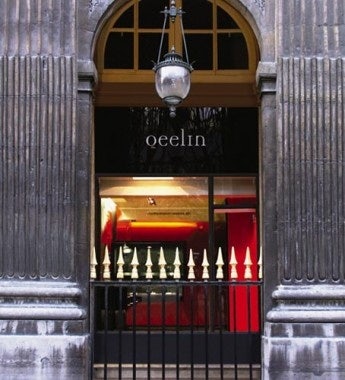Impressively Rapid Development Of Home-Grown Fashion, Jewelry, Auto Brands Means Dominance Of Foreign Brands Limited#

Although foreign luxury brands still reign supreme in the China market, there are indications that things are starting to change, gradually, as home-grown Chinese brands start to make more of an impact in the domestic market. While these new brands lack the pedigree and history of top European brands, the cultural understanding and insight afforded these brands by their domestic upbringing gives them a head start in the China market. As many foreign luxury execs have already noticed, though in the Chinese luxury market, foreign still "equals" luxury, in 10-20 years the game is certain to have changed and been reshaped by emerging Chinese luxury brands.
This year, we've already seen previously unknown Chinese luxury brands like Trands hit the world stage, boosted by high-profile devotees like Warren Buffett, and -- though the launch was dogged by accusations of design plagiarism -- the unveiling of Geely's GE sedan. On a smaller scale, Hong Kong and Mainland jewelry brands like Luk Fook, Qeelin, and Kin Hung Lee have made waves throughout China, drawing interest because of their unique Chinese design characteristics and use of culturally auspicious materials like jade and 24k gold. While these brands and the many others that dot China's urban centers have yet to make their mark overseas, and have yet to fully crack the still-Euro-obsessed Chinese luxury consumer market, over time as consumers in major metropolitan areas start to take foreign brands for granted and look to differentiate themselves by mixing and matching Asian and Western styles, Chinese luxury brands should be well placed to capitalize.
The idea of home-grown luxury development in China is important to luxury marketers all over the world, from those in the country who want to build their brands now so they can cash in later, to European and American luxury execs who want to ensure their brands keep the prestige that has made them so successful in China over the last 20 years. This week, Bruce Stanley, writing in the Khajeej Times, examines the emergence of new luxury brands in developing countries like China and India, and how today's fledgling brands will be "biting at the knees" of established brands like Hermes and Gucci in the future:
For generations, even centuries, luxury brands from France, Italy and Switzerland have served as a global benchmark for excellence in workmanship and design.
But Europe’s creative heartland for top-end jewellery, watches and fashion could, in as little as 20 years, face a stiff competitive challenge from India, China and other developing countries, executives in the luxury industry say.
These potential non-European rivals can draw on an abundance of skilled workers and quality materials and a vast base of domestic consumers with a growing taste for luxury goods. While the global center of gravity for luxury brands still rests firmly in Europe, many of the items themselves are already being produced in China and other far-flung corners of the globalized economy.
An eventual transition from this outsourcing of production to the emergence of indigenous Chinese and Indian luxury brands seems only a matter of time, especially as fewer Europeans want to earn a living as jewellers and artisans in other traditional trades, these executives told Khaleej Times.
“We can not believe we can sit on our reputation forever,” said Christian Blanckaert, a former executive vice president of Hermes International. “I believe these countries can come on and bite our knees. We should be scared of that.”
The article goes on to profile the aforementioned Qeelin, one of China's "great gold hopes" for reaching both the domestic and foreign markets. With celebrity endorsements from stars like Maggie Cheung and Kate Winslet, the six-year-old Qeelin has quickly built a following and has the potential to become the "Tiffany's of China," if they play their cards right and don't dilute their brand by cutting back on their unique workmanship in exchange for more production:
Qeelin, a maker of China-inspired jewellery, is in a unique position to test these forecasts. Founded six years ago, the firm melds French workmanship with motifs lifted from Chinese folklore.
Qeelin makes pendants, earrings and other items using black jade that is cut in China and assembled by a French-run workshop in Hong Kong, said Guillaume Brochard, its co-founder and chief executive officer. These items, including its signature diamond-encrusted “bobo” bears, are selling well in Europe and Japan; Qeelin counts actress Kate Winslett and singer Celine Dion among its celebrity clients.
The firm has a boutique in Beijing and plans to open another in Shanghai, and Brochard expects that China one day will comprise its biggest market. But for now, he believes that Chinese customers would be reluctant to buy from Qeelin if it actually produced its jewellery in China.
“Ten years ago, ‘Made in China’ was not very sexy,” he told Khaleej Times. “Even though our jewellery is not made in China, we had to face this challenge. Surprisingly, in the Western world, this was not an issue.”
But for most Chinese, who prize established — and therefore, Western — brands, it was a problem. “In China, whatever is local is not luxury,” Brochard said. As a result, Qeelin highlights the French aspect of its Franco-Chinese nature when marketing to Chinese.
As for China’s long-term potential as a producer of luxury goods, he’s a believer.
“The Chinese are catching up, and in some fields they are getting better than the Europeans.”